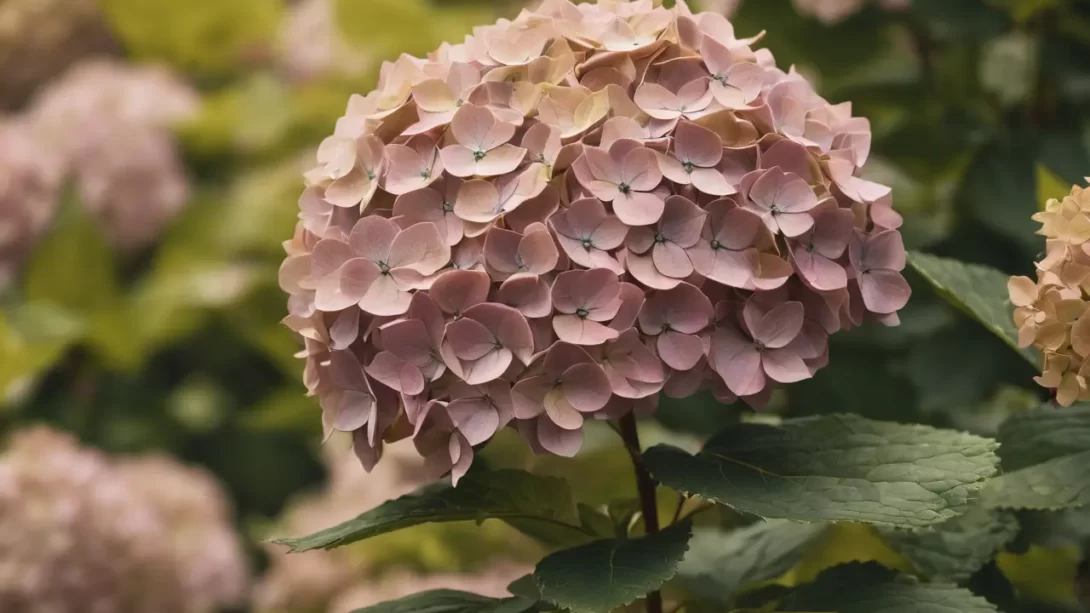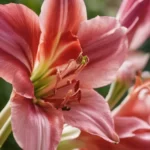Hydrangeas, with their lush foliage and large, vibrant blooms, are a favorite among gardeners for adding splendor to their gardens. However, a common concern that many face is the browning of hydrangea leaves and flowers. This issue can diminish the plant’s beauty and indicate potential health problems. Understanding why hydrangeas turn brown is essential for any gardener who wants to keep these stunning plants thriving.
Hydrangeas
Hydrangeas are known for their large flower heads, ranging in color from blue, pink, to white and green. They belong to a genus of over 70 species, each with unique characteristics. Popular types include the bigleaf hydrangea (Hydrangea macrophylla), known for its color-changing flowers depending on soil pH, and the panicle hydrangea (Hydrangea paniculata), famed for its large, cone-shaped flower clusters. Each type of hydrangea has specific light, water, and soil requirements, which are crucial for their overall health and prevention of issues like browning.
Common Causes of Browning in Hydrangeas
Water Issues
Watering problems are among the most common causes of brown leaves and flowers in hydrangeas. Both over-watering and under-watering can stress the plant, leading to browning. Over-watered hydrangeas may exhibit leaf and flower browning due to root rot, while under-watered plants can show brown edges and wilting. It’s essential to strike a balance with watering, keeping the soil moist but not soggy. Using a well-draining soil mix and checking the soil moisture before watering can help prevent these issues.
Sunlight and Temperature Stress
Hydrangeas are generally known for their preference for morning sun and afternoon shade. Excessive exposure to direct sunlight, especially in hotter climates, can lead to the scorching of leaves and flowers, causing them to turn brown. On the flip side, too little sunlight can weaken the plant, though it typically doesn’t cause browning. Adjusting the plant’s location, or providing shade during the hottest part of the day, can mitigate these issues. Additionally, extreme temperature fluctuations can also stress hydrangeas, with sudden cold snaps potentially causing brown spots on blooms and leaves.
Soil Conditions
The health of hydrangeas is deeply influenced by the soil they grow in. Soil that is too alkaline or acidic can affect nutrient uptake, leading to deficiencies that manifest as browning leaves. Hydrangeas generally prefer soil with a pH close to neutral, although some varieties, like the bigleaf hydrangea, can tolerate more acidic soils which also influence flower color. Ensuring the soil has the right balance of nutrients is key. A soil test can be invaluable in determining pH and nutrient levels, guiding you in adjusting the soil conditions with the appropriate amendments.
Diseases and Fungal Infections
Hydrangeas are susceptible to various diseases and fungal infections that can cause browning. Root rot, often a result of overwatering and poor drainage, leads to decay and browning of the roots and lower leaves. Leaf spot diseases, caused by fungi like Cercospora, present as brown spots on leaves, often with a purple halo. Powdery mildew, another common issue, appears as a white, powdery coating on leaves and can lead to browning as the infection progresses. To prevent these issues, it’s important to practice good garden hygiene, such as removing fallen leaves and avoiding overhead watering. In some cases, fungicides may be necessary to control the spread.
Pests
Pests can also contribute to the browning of hydrangea leaves and flowers. Aphids, spider mites, and scale insects are among the common pests that afflict hydrangeas. These tiny creatures feed on the sap of the plants, weakening them and sometimes causing the leaves to turn brown and die. Aphid infestations can be identified by the presence of small, green, or black insects on the undersides of leaves, while spider mites leave fine webs on the plants. Controlling pests involves regular monitoring of the plants, rinsing them with water to dislodge pests, or using insecticidal soaps and oils. In severe cases, more potent pesticides might be required, although they should be used as a last resort and applied according to the label instructions.
Care and Maintenance Tips
Proper care and maintenance are essential for keeping hydrangeas healthy and preventing issues such as browning. Regular pruning is important to promote good air circulation and reduce the risk of fungal diseases. It’s best to prune hydrangeas according to their specific type, as different varieties have different pruning needs. Additionally, fertilizing hydrangeas should be done with care. Over-fertilization can harm the plants, leading to leaf burn and browning. Using a balanced, slow-release fertilizer in the spring can provide the necessary nutrients without overwhelming the plant.
Mulching around hydrangeas helps retain soil moisture and regulate temperature, both of which are beneficial in preventing stress that can lead to browning. Organic mulches, such as wood chips or straw, are effective and also contribute to the overall health of the soil as they break down.
Advanced Considerations
While basic care is often enough to keep hydrangeas healthy, sometimes more advanced considerations are needed. Plant genetics can play a role in how hydrangeas respond to their environment. Some cultivars are more resistant to certain diseases and pests, or better suited to specific climates. When selecting hydrangeas for your garden, consider varieties that are well-suited to your local conditions.
Environmental factors such as air pollution, water quality, and neighboring plants can also affect the health of hydrangeas. Be mindful of these factors and how they might influence your gardening practices. For example, if you’re in an area with hard water, consider collecting rainwater for irrigation to avoid mineral buildup in the soil.
Conclusion
Browning in hydrangeas can be a sign of various issues, from water stress and soil problems to diseases, pests, and environmental factors. Understanding these potential causes is the first step in addressing the problem. Proper care, including appropriate watering, soil management, disease and pest control, and environmental considerations, is crucial in maintaining the health and beauty of your hydrangeas. With the right attention and care, these stunning plants can be a highlight in your garden, showcasing their lush foliage and spectacular blooms season after season. Remember, gardening is a continuous learning process, and each challenge offers an opportunity to grow and improve in your horticultural journey.



